Who really controls the storytelling flow? Is it the actors, the script, production design, or sound? Surprisingly, our vote goes to the silent conductor of great cinema: camera movement.
Yes, an actor’s performance is the backbone of a character, but their performance gets amplified by the right blocking and the way the camera follows their actions and reactions.
While production design sets the mood, its true potential is unlocked through skillful camera movements revealing the setting.
Mastering these movements is key to compelling storytelling and creating the emotion that will reach your viewers.
To do that, it’s crucial to learn tips and techniques on how to to guide your audience’s focus with camera movements
In this article, you will learn:
- Why using camera movements for storytelling matters so much
- Techniques to direct audience attention using framing and composition
- How to effectively use camera movements effectively
You don’t need to be a technical genius. But you need to know why and how you’re going to shoot a particular scene or communicate to your videographer what camera movements you plan to use.
As a director and videographer, you are actually directing viewers by telling them what to pay attention to.
And that’s why camera movement and your decision as a filmmaker on what to show matters so much.
Now, let’s explore how to use this knowledge for storytelling, using insights from Quentin Tarantino.
Camera Leads the Way
This scene from his “Once Upon a Time in Hollywood” shows that no matter what type of camera movement you choose, it should show viewers more about three crucial elements: plot, characters, and atmosphere.
Tarantino uses tracking shots to provide us with info about the result of the previous scene (something might be wrong with whatever Brad Pitt was checking out), a bunch of individuals are living in the hippie community (atmosphere), camera tilts to show us important storytelling pieces (flat tire), and static shots combined with characters’ movement within the frame show us their attitude (static hippie vs dynamic Brad Pitt).
Decide What to Show

Even if you’ve never seen this film, you could watch this scene a couple of times and it wouldn’t get boring.
Why?
The camera successfully guides viewers with the right movements and pacing.
If you’re wondering where to start with your film, you need to answer another question – what is your scene about?
Define What’s Important

Breakup? Planning a heist? Decisive moment where your character decides to go against his principles?
After you answer this, it’s time to decide how the camera will assist in storytelling.
Is it more important to be on the character delivering the lines or the one receiving them?
Planning and Precision
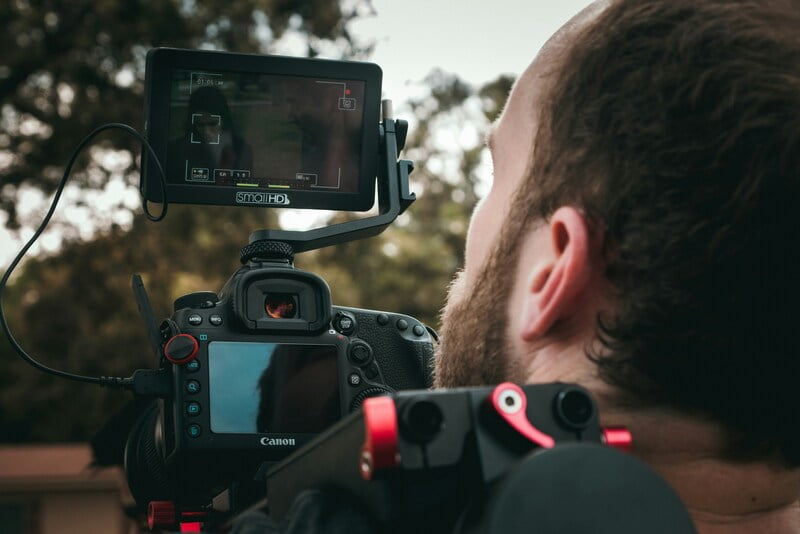
Let’s say, you’re doing a simple reverse shot dialogue scene. You might argue that you actually don’t need to know what’s important until you’re in the editing room.
But that would mean passing on the opportunity to be more specific with guiding viewers and being more deliberate with camera movement.
In the first shorts I made, I spent a lot of time filming shots I wasn’t sure I was going to use. It was a waste of time, nerves, and energy on the set.
Going with the 10th repetition looking for a reaction from the actress for the shot you’re not sure you’re going to use means spending less time filming the ones that might be crucial for the scene.
Videographer Dante Spinotti and director Michael Mann did this masterfully in the thriller “Heat” (1995). Take a look at the scene where Eady (Amy Brenneaman) and Neil McCauley (Robert De Niro) meet for the first time.
Unconventional Camera Setup
The beginning of the scene is marked with an “illogical” setup of the camera, located behind our character’s back instead of facing them upfront where we’d have the best view of their reactions.
Being a professional thief, as Eady initiates conversation, Neil is being rude, suspecting she might be an undercover cop.
Creating Emotional Connection
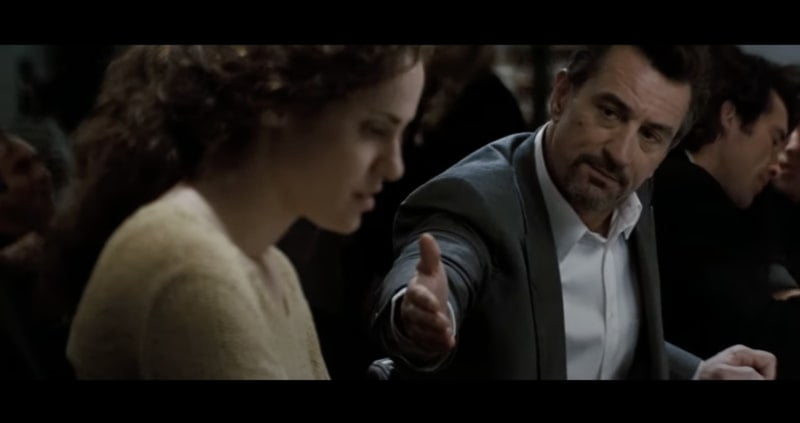
Eady is hurt, and after Neil sees she’s legit he lowers his guard. As he apologizes and Eady accepts it, the camera moves to the front so we can have a better look at our characters.
With an elegant camera movement, the director and videographer elegantly break” the 180-degree rule, and Eady and Neil become more than just strangers.
We have been offered a new point of view – as conversation became more friendly, we are now facing our characters upfront allowing us to catch all the nuances of their reaction.
This is paired with great actor’s blocking. As Eady accepts the apology, Neil sits in the chair next to Eady so he can be close to her.
Using Close-ups to create Intimacy
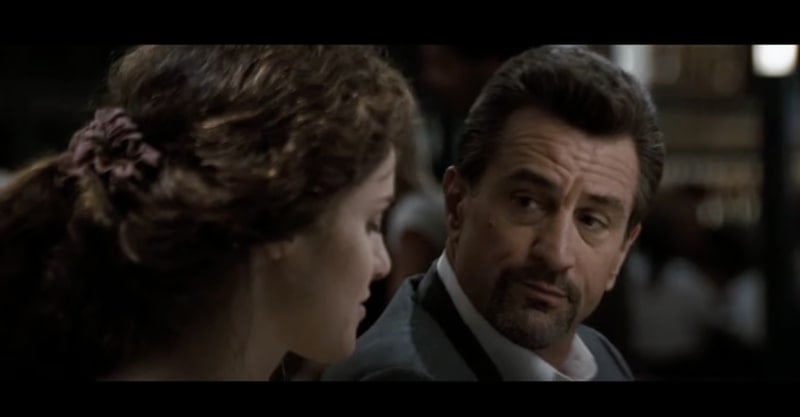
Alongside reaffirming Neil’s character of a man of action who doesn’t waste time, this naturally shifts the framing of our characters from medium to close up. As characters become closer to one another, we become more emotionally attached to them as viewers.
This wouldn’t be possible without meticulous planning before shooting the scene.
Plan Camera Movements

Always take a look at what the scene is about and how camera movement can help with reaffirming that.
Is there a way for you to tell the story with the right framing and camera movement? Or by drawing attention to specific details instead of the character speaking about it?
You might say that camera tracking, character blocking, static shots, and tons of extras at the same time sound too much for your zero-budget film.
Let’s learn how to keep viewers at the edge of their seats using only static shots (when there is no camera movement at all), no extras, and all of the characters sitting in the chair.
Show What’s Important
In this scene from “The Wolf of Wall Street” (2013), Leonardo Di Caprio’s character is discussing transferring his shady business account to a Swiss bank.
DiCaprio’s character is looking for shelter from USA authorities, and a Swiss banker for a client that will bring him lucrative fees.
He and the banker are aware of the business’ nature with each of them trying to find common ground.
Create Tension by Using Static Shots
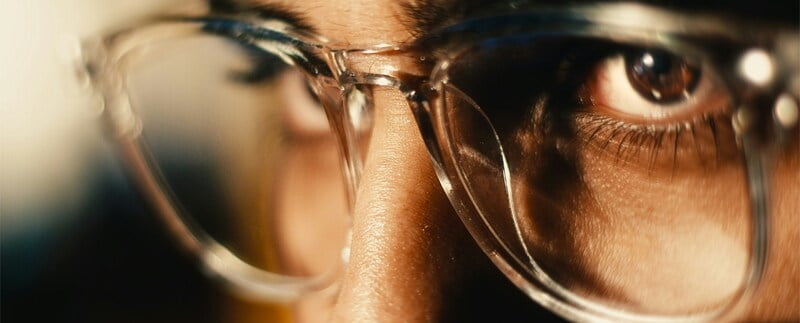
Why did Scorsese go with a static camera in an otherwise dynamic film when he could go all crazy with whip pans, tilts, and other camera wonders?
Being static with a camera and “not allowing it to move” makes viewers more uncomfortable as DiCaprio goes into more depth about the banker’s obligation to cooperate in “hypothetical” situations with US authorities.
Pay Attention to Framing

Scorsese frames his characters in the center with a Swiss banker looking into the camera – dialogue and characters are in the center of this story, and he wants viewers to focus on that. This is even more amplified by the fact that all characters are sitting and not moving.
Dialogue and characters build tension, the camera is here to support that. Being dynamic with a camera would actually work against the scene by “relieving tension.”
Show Information and Emotion
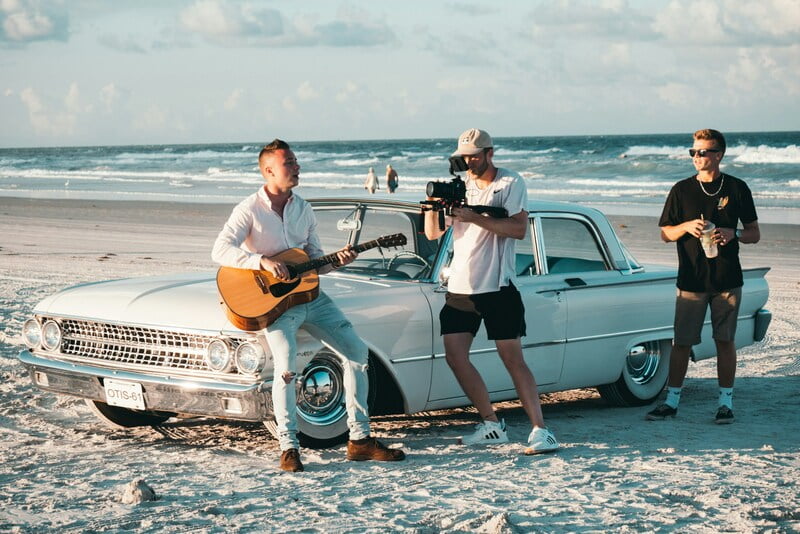
The number of shots allows us to pick up secondary information – they are located in luxurious surroundings (a lake located behind DiCaprio and an interior behind the banker).
Take advantage of this technique, especially if you’re running on a zero budget.
Provide your viewers with two key elements: information and emotion and let the actors do the rest while the camera effectively focuses on what’s important.
But not all dialogues are created equal and you might just need a fancier and more dynamic way to enrich conversation.
Use Walk and Talk in Videography
The longest take from the TV series “West Wing” (1999 – 2006) that follows the lives of staffers in the West Wing of the White House and the life of the president played by Martin Sheen is a perfect example of how walk and talk effectively amplifies the story.
Why and when to use walk and talk?
Enhance Dialogue with Movement

Try to listen to the West Wing scene with just audio.
Is it as engaging as when you see our characters walk?
A big part of the appeal of this series relies on witty dialogue that drives the plot forward.
But it’s shot in one location (White House) and a lot of dialogue with the same topic (political), no matter how cleverly written, can get “too much” for the viewers and look too repetitive.
Walk and talk takes off that pressure by making storytelling more dynamic, it feels like you’re walking those White House corridors with main characters and have an exclusive peek into groundbreaking political intrigue.
But the beauty of walk and talk is the fact that it can be used to make scenes more dynamic when you don’t have a lot to show, but also if you have a lot to show.
Bringing Landscapes to Life Through Walk-and-Talk
In the visually fascinating film “1917” (2019) that effectively simulates being a one-shot film, the opening and walk and talk is used not only to introduce us to two soldiers but also another important character in the story – the battlefield.
We get to know the initial beauty of nature contrasted with the horrors of war machines that make men’s lives seem worthless.
If it fits your narrative, use walk and talk to infuse more dynamics into your scene.
With all that we discussed, you might have noticed an important element for deciding how to use camera movement.
Adapt to Your Location
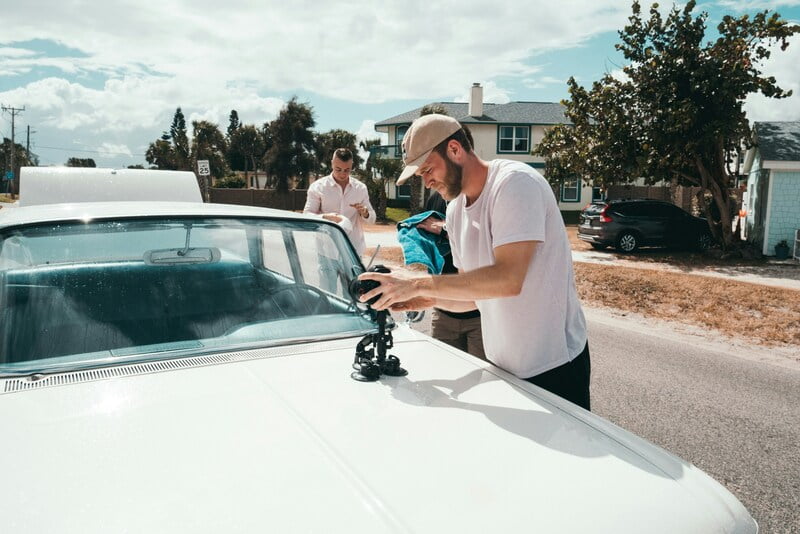
As much as you’d like to use walk and talk, not having an adequate location to do it will be a limiting factor.
If “walk and talk” is not negotiable you’ll look for another location but the smart thing to do is to take a look at what the location you chose is suited for, especially if you chose your location for a reason (even if it’s due to budgeting reasons).
Embrace Your Shooting Location
Define the advantages of your location.
In most of his films, Terrence Malick uses nature as a motif and it’s an important part of the storytelling puzzle.
With that in mind, he has nothing to hide – we are exposed to long shots of beautiful fields, steadicam tracking shots, and long takes.
If you have a location that brings production value, adjust your style to show more and use it for storytelling.
Shooting in tight spaces where you don’t have a lot to move is more suited for tighter framing and static or free-floating camera.
Adjust the Framing in Videography
“Locke” (2013) is a great example of this approach.
It’s a film about a successful businessman and family man whose life is about to change in the 90 minutes after he receives a call while driving a car.
Shot almost exclusively in the car, space for camera movement is limited.
Create Engagement in Limited Spaces
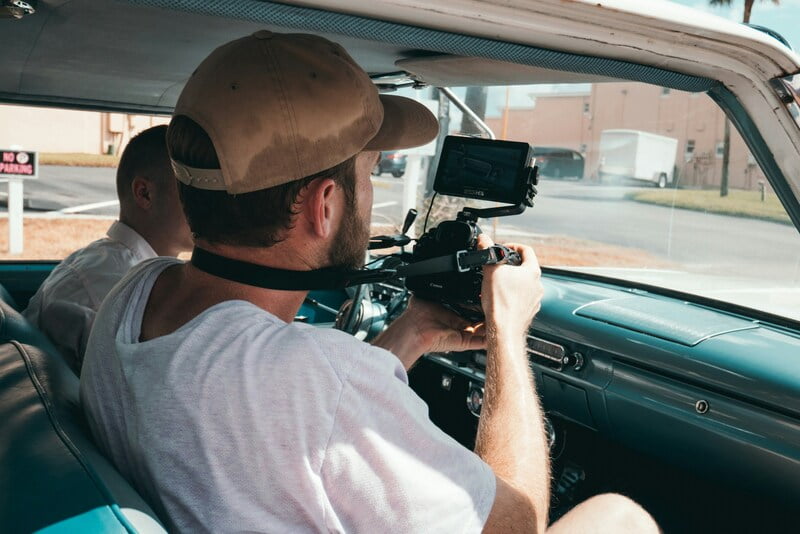
But it’s the limit director Steven Knight deliberately created (one location, one actor, and a mobile phone) and turned it into an engaging film.
Close-ups and mid-shots paired with Tom Hardy’s character that faces constant pressure from new situations that keep piling up is what makes it engaging to watch.
It’s also a great example of filming on a budget with great results.
Be Flexible With Camera Movements
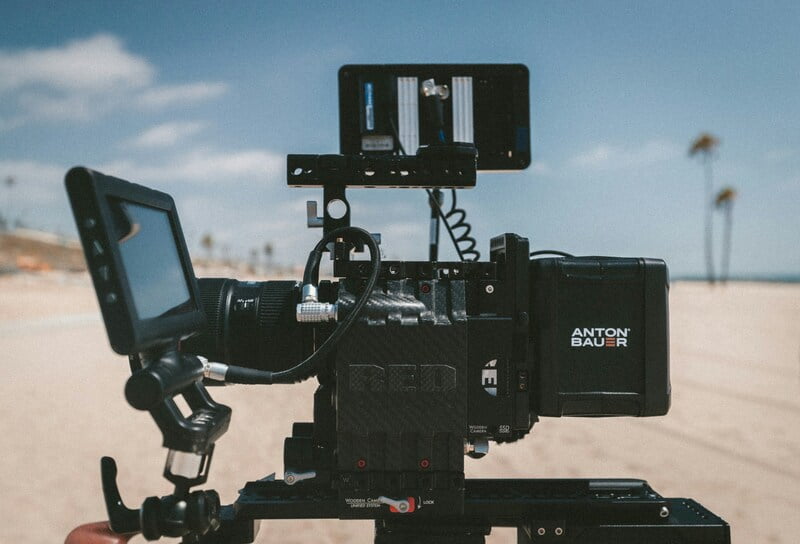
So far, we’ve been talking about choosing camera movements for particular scenes but as we zoom out, you’ll see that your story offers flexibility regarding camera movements.
Why should you go only with static or dynamic shots?
Deciding to go with only one specific camera movement throughout the film might not be the best solution overall.
Instead, you might adjust it depending on the location, narrative, and actors’ movement and scene beat.
In most films, directors use a combination of dynamic camera and static shots paired with different shot sizes.
And while you’re building your perfect mix for camera movements don’t forget that film is an audio visual medium. Sometimes story works the best when your characters say nothing at all.
With the current trend of the superhero’s fast-paced edited blockbusters, we’ve forgotten that one of the most powerful tools cinema has at its disposal is silent shots in which we absorb our character’s emotional state.
Use The Power of “Silent” Shots
In the opening of McDonagh’s “Three Billboards Outside Ebbing, Missouri” (2017) all we see are shots of billboards and shots of the lead character played by Frances McDormand without any dialogue or monologue.
Paired with music, we get information we can’t yet comprehend (it seems billboards are somewhat important) and emotion – pain and anxiety on her face.
“Show, Don’t Tell” With Videography
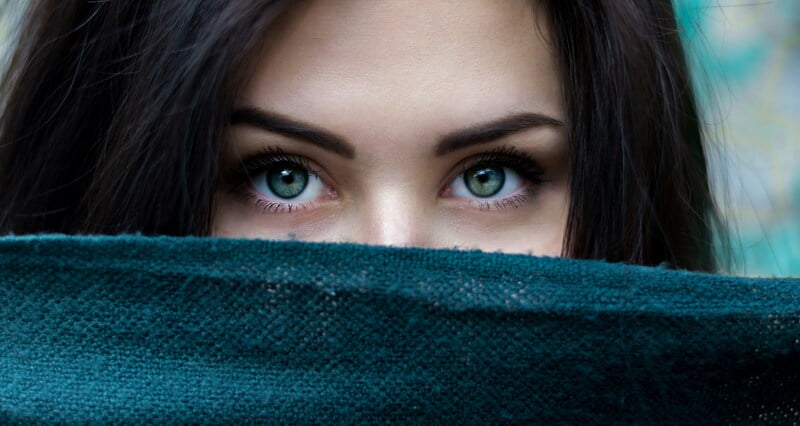
Looking from the storytelling point of view, this is a scene that will pay off later, after we find out what crosses Mildred’s mind as she was looking at the billboards and after we find out more about her family tragedy.
So what makes this intro so effective?
Camera that shows us crucial info and emotion.
Whenever you’re facing a character that goes through an emotional state important for your film, allow it to be seen in the cinematic way – no words.
Let the picture tell the story, and leave explanations for viewers.
Conclusion
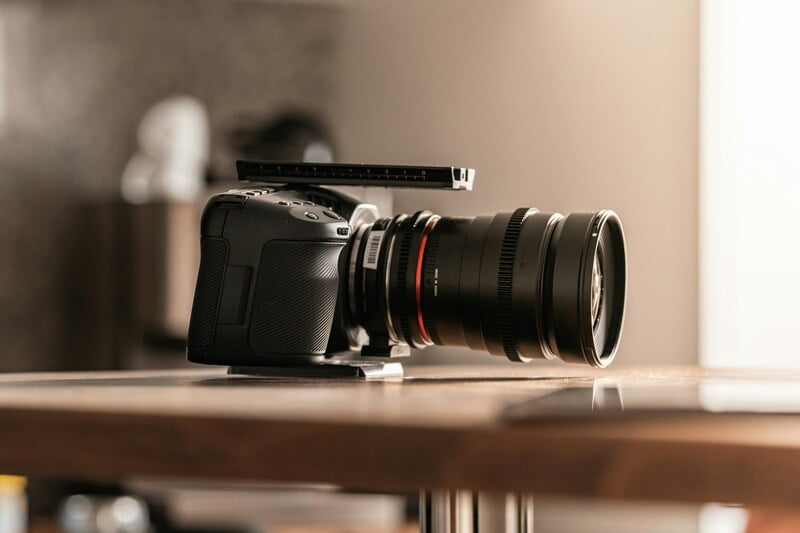
Mastering camera movements can elevate your filmmaking by creating more engaging and emotionally impactful stories.
Use the techniques you’ve learned here to guide your audience’s focus and enhance your narrative.
Remember that the camera “follows” the story. Also, stay away from using the camera just for the sake of nice shots.
If you find yourself in doubt always ask yourself a simple question:
What is this scene about and how can the camera contribute to that goal?
Whenever you can “show and not tell” use it, camera movements will be crucial in this process.
Experiment with different camera movements and framing methods to see what works best for your unique vision.
By applying these tips, you’ll be well on your way to directing your audience with confidence and creativity.
HayotFilm team would love to hear your experiences and how you plan to incorporate these techniques into your projects.
Share your stories and insights in the comments below and let us know how you’re going to tell your film with camera movements.
Happy filming!


